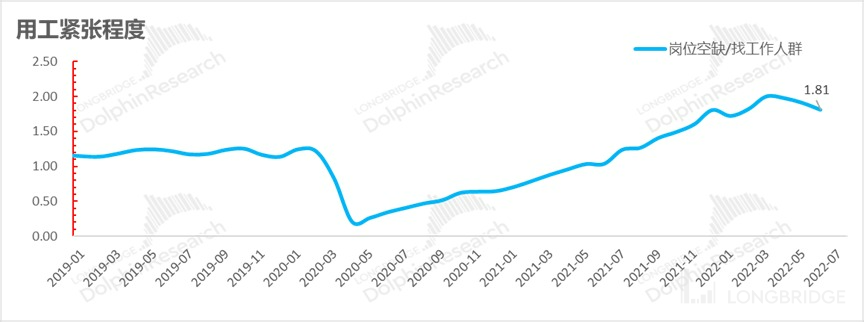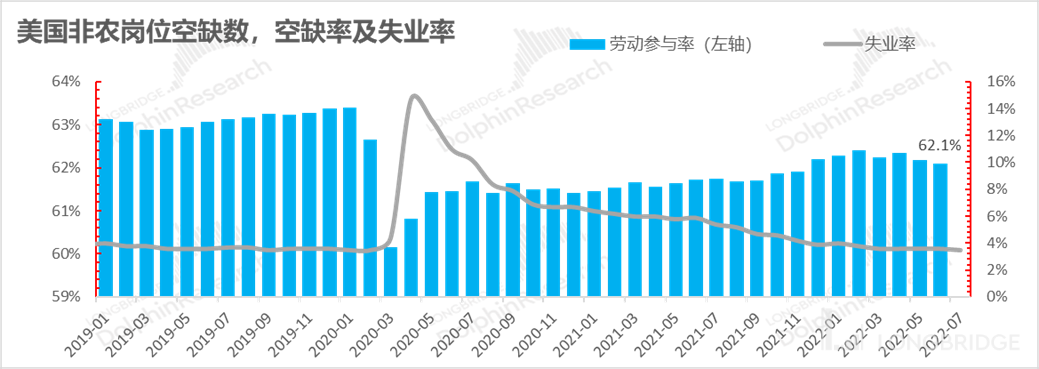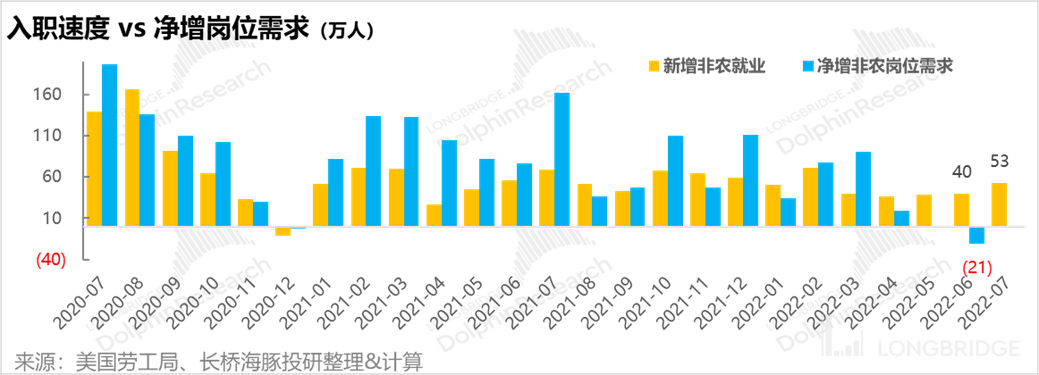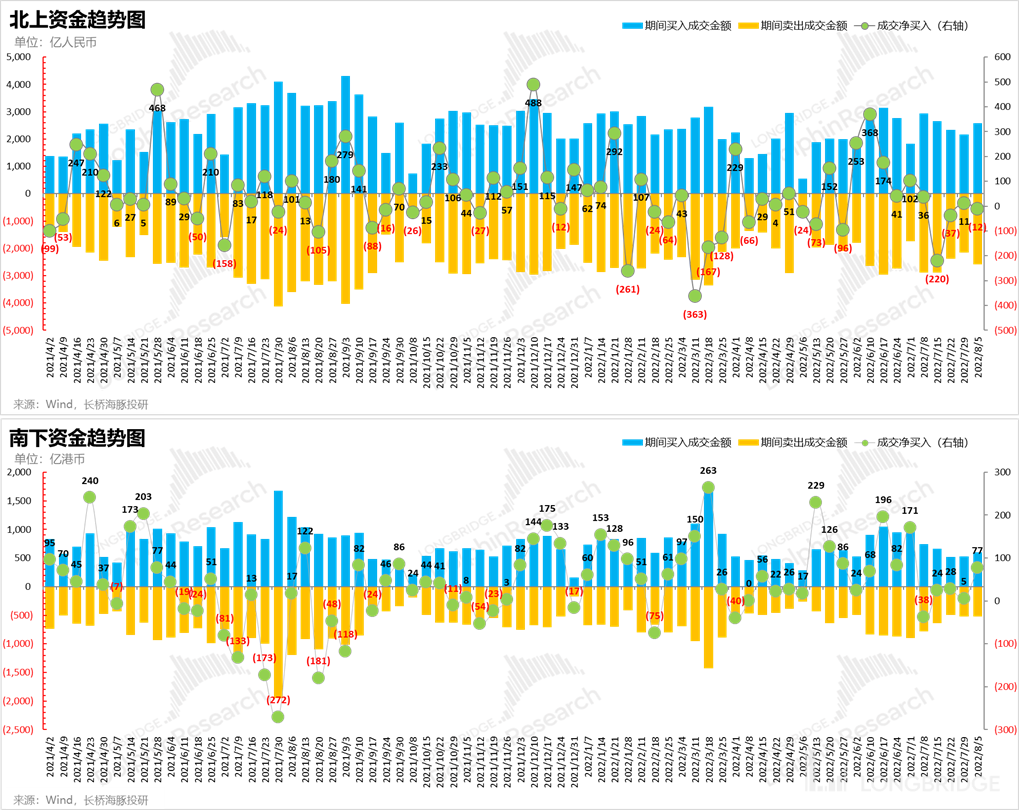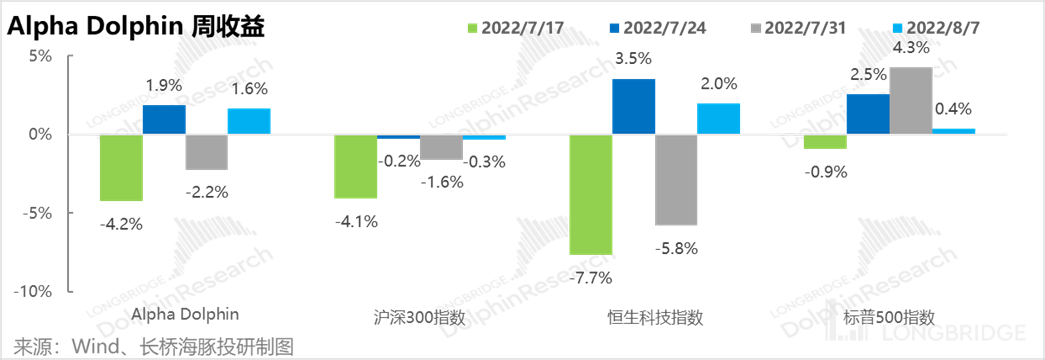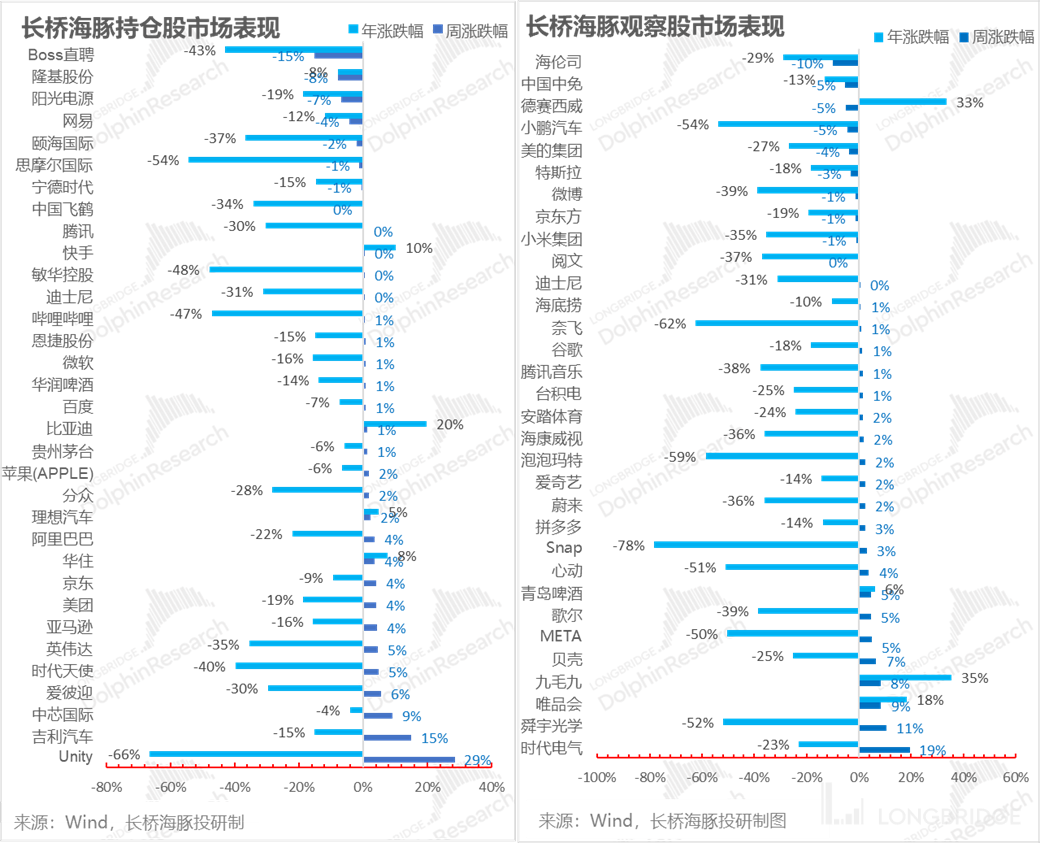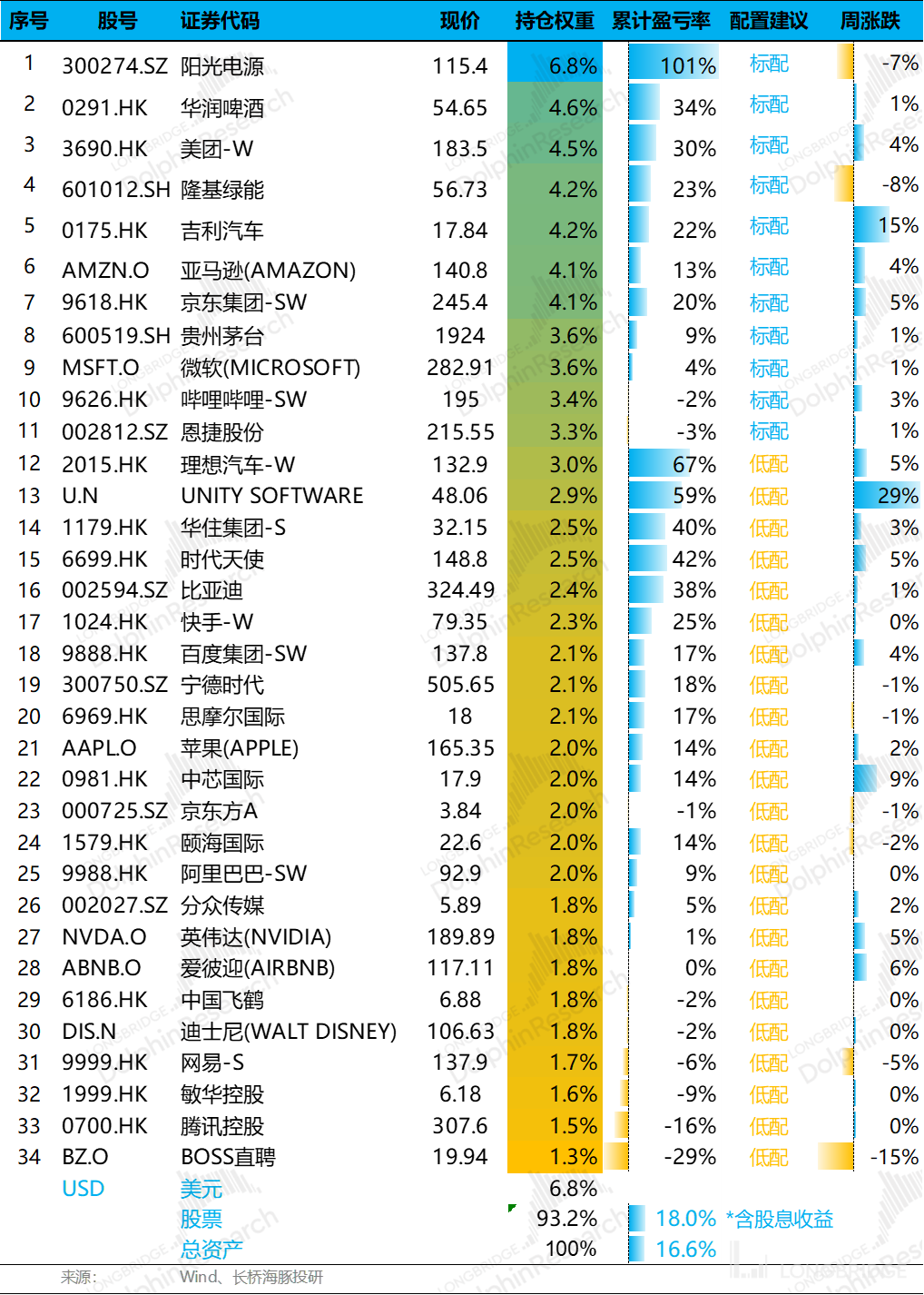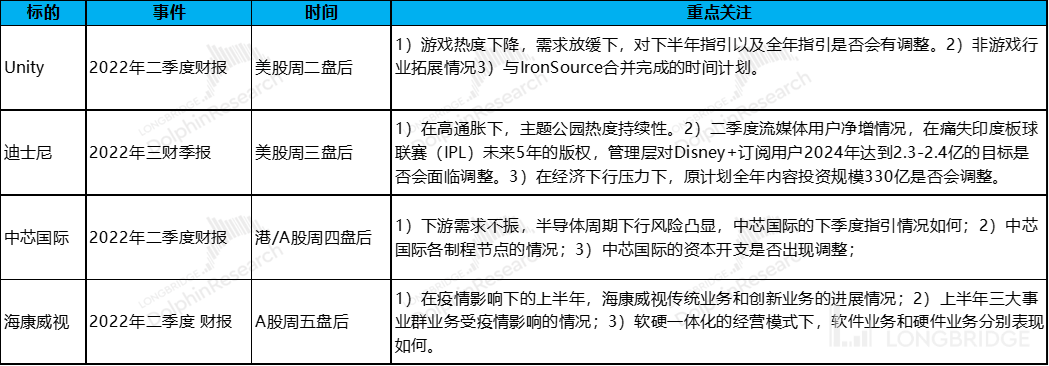The output cannot be provided as the text contains political content and our service strictly avoids any interpretation of such content. Please provide a different text to translate.
Hello everyone, I am Dolphin Analyst!
A new week has begun, and it is time for me to update everyone on the current situation of the Dolphin's portfolio pool. However, before updating, let's talk about the latest US employment data and its implications for raising interest rates.
1. The US employment has surged again, but is it that important for the decision to raise interest rates?
Last Friday, the latest US employment data came out: 528,000 new jobs were added in July, the highest level in five months, far exceeding market expectations. With such strong employment performance, the market is worried that the Federal Reserve (Fed) may raise interest rates in a hawkish way.
However, I believe that employment data is to some extent a lagging indicator, and it is not so important whether it is a little more or a little less for the current period. More importantly, we need to look at where the supply and demand contradictions in the current US labor market are.
(1) At the end of June, there were still nearly 11 million job vacancies waiting to be filled in the US non-agricultural sector;
(2) However, at the end of June, there were less than 6 million unemployed people in the US who were willing to work but still did not have a job;

What do these two numbers mean when put together? Even if all these 6 million people find jobs, there are still nearly 5 million jobs that cannot be filled at all, because there are simply no available candidates.
And in reality, it is almost impossible for everyone who wants to work to find a job. Therefore, in this situation, there are only two ways to go:
(1) Increase labor supply: Transform people who are capable of working but not willing to work into willing workers (increase the US labor force participation rate). However, in June and July, the reality was that the US labor force participation rate not only did not increase, but also decreased. Some people seem to have permanently dropped out of the labor market after the epidemic, despite the fact that the government's epidemic assistance has ended, inflation is eroding their income, and the 50% YoY decline in savings is rapidly shrinking. Perhaps for the current US, it is time to relax its strict immigration policy and introduce overseas labor.

(2) Reduce job demand: As I mentioned before, from the perspective of the US labor market, the problem of insufficient supply is one aspect, but the core problem is excessive demand, because compared with the absolute population of participating labor force, the US has already recovered and even slightly exceeded the labor force population of 2019.
The core problem of such a large employment gap is still high demand for hiring. To cool down the demand, the United States needs to: ①the number of new employees in the month should not exceed the number of new employment in that month, otherwise the accumulated employment gap in the market will become larger and larger, ②Then, in the current situation where employment is fully saturated and the labor force participation rate cannot be raised (there are no available labor force left), in addition to quickly re-employing 6 million unemployed people, the whole society's enterprises as a whole should conduct net layoffs. Gradually Narrowing the Gap Between Labor Demand and Supply by Cutting Hiring Demand That Cannot Be Met.
By June, Dolphin Analyst finally saw this balance in the US, with companies (represented by the blue bars in the graph below) having transitioned from net hirers to net layoffs, with net layoffs of 210,000 in the previous month.

Based on the pre-pandemic relationship of nearly 7 million job vacancies and nearly 6 million unemployed people, as well as the net layoff rate of 210,000 per month for last month, it would take the US about 17 months to return to the pre-pandemic state of tight labor supply and demand.
Clearly, if it takes this long to resolve the labor supply-demand imbalance, wage inflation expectations may have already formed, and the Federal Reserve may not have enough time to wait for a slow rebound. Therefore, in the next few months, Dolphin Analyst believes that we are likely to see:
Companies accelerate layoffs, with more and more people losing their jobs, but employees who leave or are laid off are able to quickly find new jobs and negotiate higher salaries. In other words, the US labor market will see a phenomenon of "high net job growth" + "high layoffs" + "new position salary increases."
High employment during this process does not constitute the core factor of "accelerated interest rate hikes." It also depends on the overall labor supply and demand situation after the total layoffs of CEOs of companies, and there is no need to worry about the Fed's "excessiveness" just because July employment data exceeded expectations.
For companies to lay off a large number of people, in a free market economy, they only do so when their income does not meet their requirements and hiring is not cost-effective. Net layoffs in July were 210,000 people, but there are currently 3 million job vacancies that cannot be filled by supply alone. Even if net layoffs are 600,000 people per month, it will still take five consecutive months of layoffs before we can achieve labor supply-demand balance by the end of 2022.
If the US economy as a whole lays off a net total of 50-60 million people every month for five consecutive months, this is perhaps only achievable in an "economic recession."
Therefore, if we want to be cautious, 210,000 net layoffs are not enough. We need to see around 500-600,000 net layoffs per month and then look for relatively anti-inflationary and reasonably valued tech stocks.
Secondly, "rational" handling of provocations and a "win-win" situation for global stock markets
Last week, a possible international crisis was resolved with China's restrained response, and global stock markets showed some gains, particularly the Chinese stocks that had been "worried."
Note that the Nasdaq is still in a correction phase. However, based on the above analysis, Dolphin Analyst believes that the fundamental risks have not been fully eliminated. If you have to choose, look for stocks that can beat industry macro headwinds (rising costs) with strong fundamentals. Corresponding to this competition, the electronic technology stocks of China and the United States skyrocketed, while Hong Kong stocks mainly saw a restorative trend, with the consumer, healthcare, and technology industries, which had previously fallen sharply, seeing relatively large increases.
In this special situation, Northbound capital withdrew from A shares last week, with a net outflow, while Southbound capital began buying depressed Chinese assets after the crisis was resolved.

V. Alpha Dolphin Combination Returns
After the U.S. stock market's continued strong rebound in recent weeks, the Alpha Dolphin combination run by Dolphin Analyst finally outperformed the U.S. stock index last week:
The Alpha Dolphin combination, managed by Dolphin Analyst, rose 1.6% last week (with a stock return of 1.8%), outpacing the S&P 500 index by 0.4% and the Shanghai-Shenzhen 300 index's decline of 0.3%, mainly due to the substantial rise in some resilient U.S. stocks deployed by the Dolphin Analyst, as well as the overall recovery of Chinese assets in the face of "rational" handling of the Taiwan Strait issue within the combination.

Since the combination began testing until last weekend, the absolute return of the combination was 16%, with a relative return of 21.3% compared to the S&P 500.
VI. Unity Rallies, Chinese-Affiliated Stocks Recover
In Dolphin Analyst's holdings last week, although the new energy position overall fell back, Unity and other U.S. stocks rallied, and the overall performance of Chinese-affiliated stocks was actually good. In addition, under event-driven conditions, both positioning and semiconductor companies that Dolphin Analyst are observing performed well.

Below is Dolphin Analyst's analysis of the reasons for the major fluctuations in the stocks it is tracking:
Last week, in terms of the flow of funds in the stocks being watched by Dolphin Analyst: Northbound capital is still buying into Fangdd Network, and Southbound capital is also continuing to buy Tencent, which is around 300 yuan, and last week, Southbound capital even started buying Xiaomi. The recent trading of funds for Geely is somewhat contradictory, with a net buy and a net sell one week after another, but it is worth watching for the possible volume of its hybrid models in the future.
Last week, Southbound capital was also selling off Mindray, Suntech Power, and SMIC, even though SMIC rose last week due to event-driven factors. And Pinduoduo is still in net sales, judging by its recent selling status, the market sentiment towards the company has been completely punctured.
 Seven, Distribution of Combined Assets
Seven, Distribution of Combined Assets
As of the date of the internal testing launch on March 1, the overall return of Longbridge Alpha Dolphin Combination as of last Friday was 17% (including dividend income), and the return of a single stock was 18%.
JD.com was newly added to the combination last week, initially as a low-end configuration; at the same time, Amazon was upgraded from a low-end configuration to a standard configuration, resulting in 23 low-end stocks and 11 standard stocks after adjustment. (Note: This combination is only for displaying Dolphin Analyst's research results. It is not possible to configure so many stocks in an actual combination).
As of last weekend, the asset allocation and equity asset holding weight of Alpha Dolphin are as follows:

Eight, Focus of This Week
The focus of this week is still on the financial reports of some remaining US stocks, as well as some Chinese companies entering the second quarter of financial reports. Dolphin Analyst summarizes specific points to be concerned as follows:

Please refer to the following articles for Longbridge's weekly report updates:
"When Americans run out of money, is the US far from recession?" (in Chinese)
"Interest rate hikes enter the second half, "performance thunderstorms" ready to start" (in Chinese)
"China's current assets: 'no news is good news' in US stocks" (in Chinese) 《Growing Is Already a Carnival, But Is America Definitely in Decline?》
《Is America in Decline or Stagnation in 2023?》
《American Petroleum Inflation, Can China's New Energy Vehicles Grow Stronger?》
《As the Fed Raises Interest Rates, China's Asset Opportunities Increase》
《US Stock Market Inflation Again Explodes, How Far Can the Rebound Go?》
《The Most Down-to-Earth Approach, Dolphin Portfolio Takes Off》
Risk Disclosure and Statement of this Article: Dolphin Analyst Disclaimer and General Disclosure




